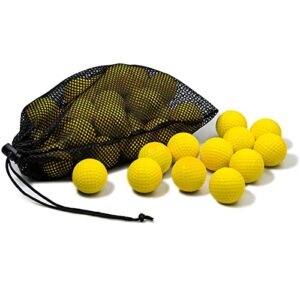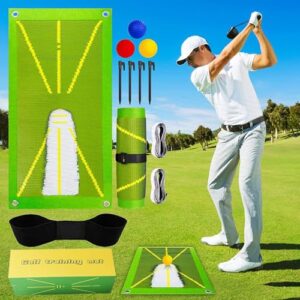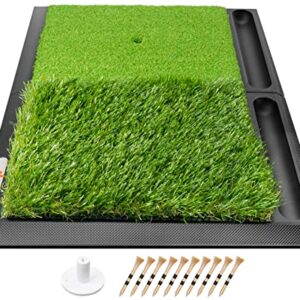
Mastering Uneven Lies: 5 Drills to Improve Your Hill and Slope Shots
Golf courses aren’t flat, and some of the most challenging shots come from uneven lies. Whether you’re facing an uphill, downhill, or side-hill lie, adapting your stance and swing is crucial for consistent contact and accuracy. In this article, we’ll explore five effective drills designed to help you conquer these tricky situations and improve your performance on uneven terrain.
1. The Stance Alignment Drill
Purpose: Improve balance and alignment on sloped surfaces
Setup:
- Find a mild slope on the practice area.
- Place an alignment stick parallel to the slope, representing the target line.
Execution:
- Address the ball with the alignment stick between your feet.
- Adjust your stance so that your shoulders are parallel to the slope.
- Practice taking swings, focusing on maintaining balance throughout.
2. The Ball Position Adjustment Drill
Purpose: Learn to adjust ball position for different slopes
Setup:
- Set up stations for uphill, downhill, and side-hill lies.
- Place three balls at each station: one in your normal position, one forward, and one back in your stance.
Execution:
- Hit shots from each ball position at each station.
- For uphill lies, favor the forward ball position.
- For downhill lies, favor the back ball position.
- For side-hill lies, adjust based on whether the ball is above or below your feet.
3. The Clubface Control Drill
Purpose: Maintain square clubface on uneven lies
Setup:
- Find a moderate side-hill lie.
- Place a clubhead-sized piece of cardboard or an alignment aid on the ground, perpendicular to your target line.
Execution:
- Address the ball, ensuring your clubface is square to the cardboard/alignment aid.
- Take half swings, focusing on returning the clubface square to the board at impact.
- Gradually progress to full swings.
4. The Weight Distribution Drill
Purpose: Improve contact on uphill and downhill lies
Setup:
- Find both uphill and downhill slopes.
- Place a club shaft or alignment stick behind your heels.
Execution:
- For uphill lies, practice swings with 60% of your weight on your back foot.
- For downhill lies, shift 60% of your weight to your front foot.
- Focus on maintaining this weight distribution throughout the swing.
5. The Uneven Lie Chip Shot Challenge
Purpose: Improve short game adaptability on slopes
Setup:
- Around a practice green, identify various uneven lie situations (uphill, downhill, side-hill).
- Place several balls at each location.
Execution:
- Work your way around the green, chipping from each uneven lie to different targets.
- Experiment with different clubs and trajectories for each lie.
- Keep score to add a competitive element and simulate on-course pressure.
Implementing These Drills:
Incorporate these drills into your practice routine, spending about 20-30 minutes on uneven lie practice during each session. If your home course or practice facility lacks sufficient slopes, look for natural undulations or create artificial slopes using mats or boards (safely secured, of course).
Remember to start with small slopes and gradually progress to more severe lies as your skills improve. Always prioritize maintaining good balance throughout these drills.
Conclusion:
Mastering uneven lies can significantly lower your scores, especially on courses with varied terrain. These five drills target different aspects of playing from slopes, from stance and alignment to ball position and weight distribution.
As you practice, you’ll develop a feel for how the ball reacts from different lies. This experience will boost your confidence when facing similar situations on the course. Remember, the goal is not just to make solid contact, but to control the ball’s trajectory and distance from these challenging positions.
Stay patient and persistent in your practice. With time, you’ll find that shots from uneven lies become less daunting and more of an opportunity to showcase your skills. Here’s to conquering the slopes and shooting lower scores! Check out the best Range Finders
-
Tee-rific Golf Training Mat: Master Your Swing, Perfect Your Posture, Elevate Your Game
Rated 0 out of 5$15.99 -
⛳️ Jaya Golf Hitting Mat: Elevate Your Swing with Dual-Turf or Tri-Turf Options ⛳️
Rated 0 out of 5$42.99Original price was: $42.99.$37.99Current price is: $37.99.





